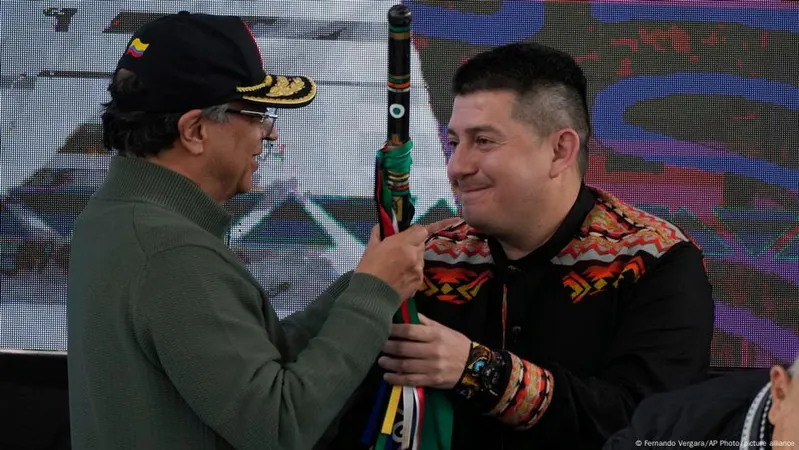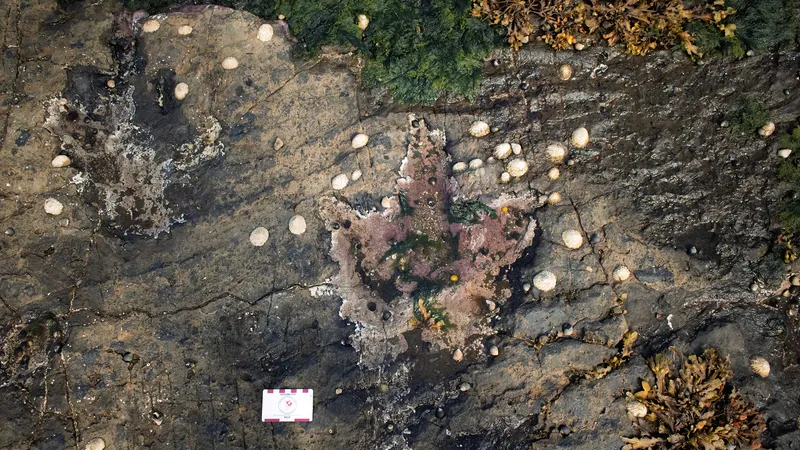
Groundbreaking Strontium Isotope Map Unveils Africa's Hidden Geologic Secrets!
2025-01-06
Author: Liam
Revolutionary Map of Sub-Saharan Africa
In a remarkable advancement, researchers from UC Santa Cruz have unveiled a pioneering strontium isotope map of Sub-Saharan Africa—marking the first time such comprehensive geologic 'fingerprints' have been accessible for the region. This revolutionary tool opens new corridors of understanding for archaeologists, conservationists, and forensic scientists navigating the intricate tapestry of Africa’s past and present.
A Game-Changer for Historical Understanding
Why is this map a game-changer, you ask? It has the potential to trace artifacts, as well as plant, animal, and human remains found across the globe, back to their precise regions of origin in Africa. This could transform our understanding of various historical issues—ranging from the harrowing narratives of the transatlantic slave trade to the ongoing crises related to wildlife trafficking and contemporary human migration patterns.
Scientific Breakthrough in Mapping
Published in the esteemed journal Nature Communications, this map represents the first bioavailable strontium isotope ratios that predict elements across the entirety of Sub-Saharan Africa. Strontium, present in the earth’s bedrock and soils, exists in various isotopic forms. The ratios in which these isotopes occur can tell scientists about the age and chemical characteristics of a specific region’s geology—a revelation that is now calculable thanks to over a decade of collaborative research involving more than 100 scientists.
Filling Historical Gaps
Professor Vicky Oelze, the project’s conceptual founder and lead author, emphasizes the critical need for this mapping, given the historical neglect of data from Sub-Saharan Africa. This region has long suffered from a lack of scientific exploration because of insufficient local resources, logistical challenges, and safety concerns stemming from armed conflicts. Oelze noted that a mere two data points existed for Western Central Africa prior to this extensive project, underscoring an opportunity for academic equity that had been denied for far too long.
A Monumental Leap Forward
The new isotope map emerged from a fusion of existing strontium isotope data from southern and eastern Africa, complemented by groundbreaking new data gathered from 778 samples spanning 24 countries in Western and Central Africa. This effort provides inaugural strontium isotope information for 16 nations, representing a monumental leap forward in African geological studies. The samples included wild plants, soil, animal bones, teeth, and even snail shells, meticulously analyzed by a dedicated team at UC Santa Cruz.
Reconstructing Ancestral Roots
The research team additionally examined strontium ratios from the remains of enslaved individuals buried in historical cemeteries in South Carolina and Brazil, reconstructing their potential regions of origin with newfound precision. Oelze notes, 'Descendants of enslaved people today are eager to uncover their ancestral roots, and our work is crucial in providing those insights.'
Broader Implications for Conservation and Forensics
But the applications of this map extend far beyond academia. It offers vital tools in the fight against wildlife trafficking. By analyzing strontium ratios in confiscated animal products, conservationists can identify the geographical sources of poaching, thereby assisting law enforcement in dismantling smuggling networks.
Moreover, the map has sobering implications for forensic science. With thousands losing their lives trying to cross the Mediterranean in search of a better life, tracing strontium isotopes could help identify the deceased, allowing for dignified repatriation to their home countries.
Looking to the Future
As they look to the future, Oelze and her team are committed to enhancing the map's usefulness by seeking more samples from data-sparse regions such as the Sahel and Mozambique. 'We aim to fill these critical gaps and work closely with local archaeologists,' she stated.
Conclusion
With this groundbreaking research, the mysterious histories of countless individuals and species may finally be illuminated, fostering a deeper understanding of Africa’s cultural and biological legacies.
Stay Tuned!
This groundbreaking map could redefine our understanding of Africa's past and reshape our efforts to protect its future!









 Brasil (PT)
Brasil (PT)
 Canada (EN)
Canada (EN)
 Chile (ES)
Chile (ES)
 Česko (CS)
Česko (CS)
 대한민국 (KO)
대한민국 (KO)
 España (ES)
España (ES)
 France (FR)
France (FR)
 Hong Kong (EN)
Hong Kong (EN)
 Italia (IT)
Italia (IT)
 日本 (JA)
日本 (JA)
 Magyarország (HU)
Magyarország (HU)
 Norge (NO)
Norge (NO)
 Polska (PL)
Polska (PL)
 Schweiz (DE)
Schweiz (DE)
 Singapore (EN)
Singapore (EN)
 Sverige (SV)
Sverige (SV)
 Suomi (FI)
Suomi (FI)
 Türkiye (TR)
Türkiye (TR)
 الإمارات العربية المتحدة (AR)
الإمارات العربية المتحدة (AR)